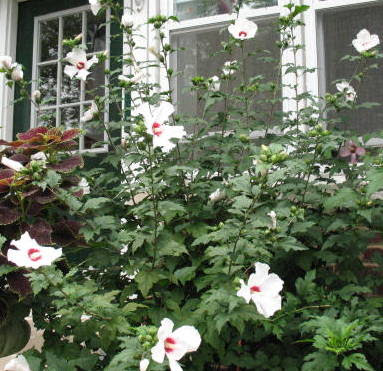Spring arrives this afternoon, and, for a change, there are actual signs of its existence in Chicago. Exhibit "A" is the crocus above.
For organic gardeners, this flower is a signal that it is time to make use one of the more effective weapons in our rather skimpy arsenal -- corn gluten. A completely organic fertilizer, gluten also acts as a pre-emergent weed-killer. It completely ignores established weeds. It only goes after weed seeds and only when they begin to germinate. Applying it too early or too late will have no effect. So we use the crocus as our signal flare.
Corn gluten is not exactly heavy artillery. If you love Round-Up, you will not like gluten. While it may be killing weed seeds, the weeds around it are producing more. Only after several years of sustained applications can you begin to see a noticeable difference.
On top of that, gluten does not just kill weed seeds; it likes to kill
all seeds. If you were planning to plant flower seeds this spring, you cannot use gluten in the same area. To be safe, many gardeners apply gluten only in the fall, using spring solely for planting.
The other thing that a crocus can tell us is whether or not our soil is ready to be worked. This is a product of soil moisture and soil temperature.
I can plant cool weather crops like peas and spinach right away -- provided the soil is not too soggy. And here we get to the famous mud ball test. If you dig soil to the depth of the shovel blade you can grab a handful from the bottom of the hole and make a ball with it. The soil is dry enough when the ball won't stick together. If it keeps its shape, the soil is too wet. Digging in soggy soil will ruin its structure.
Our vegetable garden is helped by the fact that we always use raised beds. These help the soil dry up faster at this time of year. Later they will help raise the soil temperature as well.
 |
These new beds built yesterday are at right angles to
the ones from last year to help mix the soil and keep
it healthy. |
If we can find enough time, we hope to plant parsley, sugar snack and snow peas, spinach and fingerling potatoes this weekend. Broccoli is next. No, no tomatoes yet. You can't have everything.


















































